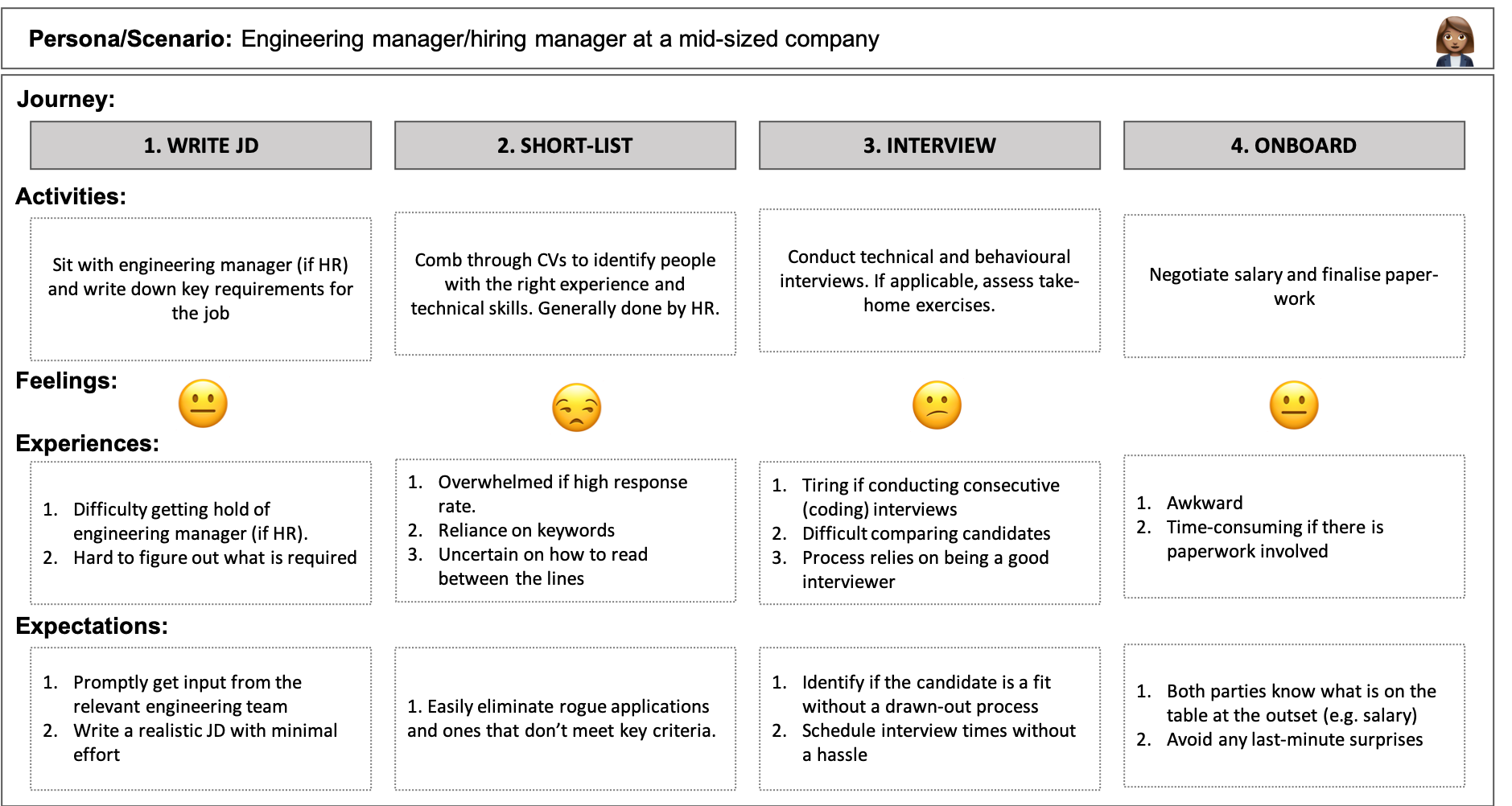Speaking with users is a topic that is layered enough to fill an entire book. In fact, there are entire books dedicated to the subject; The Mom Test and Continuous Discovery Habits are popular examples that cover the topic in detail. This being a chronicle of sorts, I will stick to some of the techniques I used and the tips and tricks that I made note of (and tried to apply) from various different sources. Since we are talking about deep dives to figure out what to build (that is, the initial phase of product development), customer interviews are an integral research technique.
As far as interviews go, there are three areas that determine their effectiveness:
- Sourcing the right people to speak with
- Asking the right questions
- Synthesising the takeaways
Sourcing:
Sourcing enough people to interview is one of the trickiest parts of the research process: where do you find enough target users to talk to? Your goal is to talk to all those who might be using your software. If the product already has users and/or your users are in your immediate midst, you have your work cut out for you. Otherwise, you might have to recruit them from your personal network or through adverts (perhaps with a voucher as an incentive). In the case of the job board that I was working on, the paying customer was the employer and to get a good grasp of the opportunities (customers pains, desires and needs that serve as opportunities for us to fill a gap), I had to speak with hiring managers from different types of companies, mostly sourced through personal networks, Slack groups etc. Job-hunters was another group to speak with; this was relatively straightforward as (a) I could empathise with this group and (b) I had some access via personal networks.
Interview mechanics:
The second challenge in user research is the mechanics to follow when conducting the interview: what do you ask, what do you not ask and so on. Bear in mind that asking for stories that elicit behaviour is always going to trump opinions. Torres (author of Continuous Discovery Habits) gives an example here. Asking someone what factors they consider when buying a pair of jeans (i.e. for hard facts) would result in a rationalised answer: that is, what they think they do. But if you ask someone to describe how they went about buying jeans the last time that they went shopping, you encourage them to tell you their actions, their behaviours, what really happened on the ground. Recalling facts is a process that is rife with cognitive biases and the human brain is remarkable at creating coherent (but not necessarily accurate) stories that deceive us.
How then does one come up with the right questions to ask? The first step is to differentiate between research questions and interview questions. The former is essentially: What needs/pains/desires matter most to this customer? The latter, in fact, revolves around stories and plot points. Before beginning to interview users, it might be wise to sketch out the typical experience faced by the user: the key user actions/intentions, the emotions felt and the expectations at each stage. You could draft an initial version based on your experience and tweak once you’ve spoken to a few people. Once interviews are scheduled, focus on stories (“Tell me about the last time you…” type questions), varying the focus as you see fit (e.g. Do you want to focus on a specific entertainment provider such as Netflix or entertainment in general?). Once a customer starts talking about their experience, it might be useful to use story nodes (i.e. the key phases in a customer journey) as a guide to dig deep. As a guide: every story has a protagonist, a beginning/middle/end, and other characters. 1
Another best practice when interviewing is to do so, where possible, as a trio (product manager, designer, engineer). The more diversity that you have in the room, the more lived-in experiences you’d have to generate more insights.
To summarise:
- Map out a typical customer experience map
- Focus on stories: these could be open-ended or more specific
- Excavate using story nodes and plot-points; use the experience map as a guide
Interview synthesis:
The last step in the process is to synthesise the takeaways from the interview. The recommended approach is to do so via snapshots at the end of each interview. I’ve annotated a sample from one of the interviews that I conducted (based on a structure recommended by Torres).
 Interview synthesis (click to enlarge)
Interview synthesis (click to enlarge)
-
If you are at the initial stages of product development, one of the goals of story excavation is to find out how pressing the problem is for the user. Asking what they do at the moment is a good way to find out if your idea is a nice-to-have or a must-have. ↩


